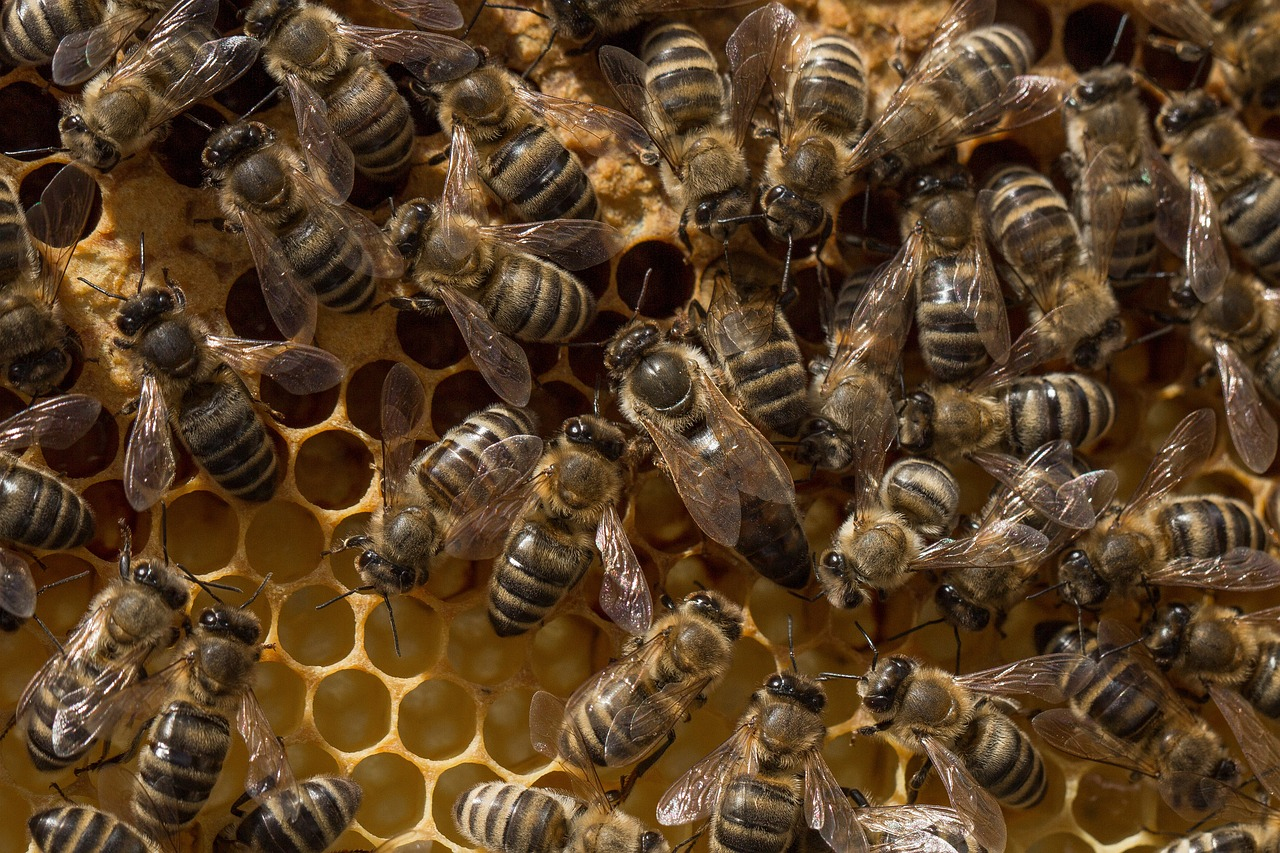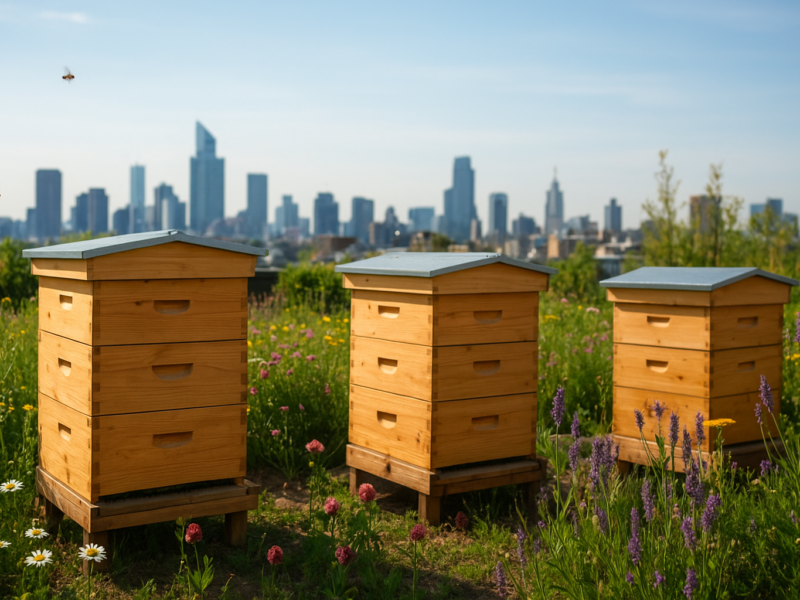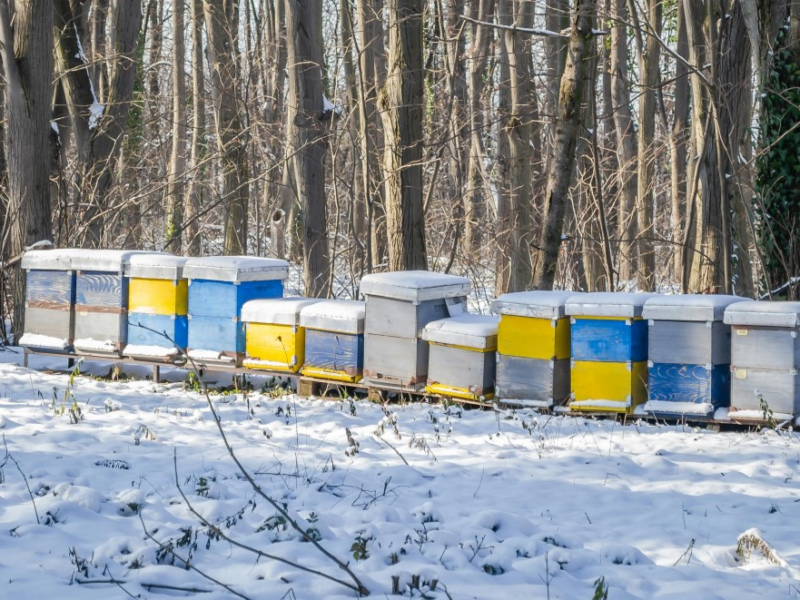🐝 Introduction: The Heart of Every Hive
The queen bee is the central figure of every colony — the mother of thousands and the guardian of genetic continuity. While worker bees gather nectar and drones exist only to mate, the queen’s sole purpose is reproduction and maintaining harmony through her pheromones.
In a healthy hive, her presence keeps the colony calm, organized, and productive. Without her, chaos quickly spreads — workers stop tending brood, drones lose purpose, and survival becomes uncertain.
🐣 The Life Cycle of a Queen Bee
The queen’s journey begins like every other bee — as an egg laid in a wax cell. But it’s how she’s fed and raised that makes all the difference.
🥚 From Egg to Larva
The queen starts as a fertilized egg laid by the current queen. Within three days, the egg hatches into a larva. Worker bees then decide — based on colony needs — whether the larva will become a queen or a worker.
👑 Royal Jelly: The Food of Queens
If chosen to be a queen, the larva is exclusively fed royal jelly, a nutrient-rich secretion from nurse bees’ glands. This superfood alters her genetic development, transforming her ovaries and elongating her body to prepare her for egg-laying.

🐝 The Birth of a New Queen
After about 16 days, the new queen chews her way out of her wax cell. If multiple queens hatch, they fight until only one survives — nature’s way of ensuring dominance and stability.
This process embodies the survival of the fittest, and the victorious queen becomes the sole mother of the hive.
💕 The Queen’s Mating Flight
Within a few days of emerging, the young queen takes her mating flight. She flies high into the air where male drones from other colonies await.
A single queen may mate with 10–20 drones during this flight, storing their sperm in a special organ called the spermatheca. This stored sperm will fertilize millions of eggs throughout her life, which can last up to 5 years.

🌸 Pheromones: The Hive’s Chemical Language
The queen’s pheromones act like a communication network. They keep workers loyal, regulate behavior, and suppress other females from becoming fertile.
If these pheromones fade (due to age or stress), workers may begin raising a replacement — known as supersedure.
⚖️ Maintaining Colony Harmony
Her presence maintains order. Without her pheromones, bees may become aggressive or disorganized. Beekeepers often observe this when a hive becomes queenless — the colony buzz changes, and productivity drops instantly.
🧰 How Beekeepers Identify and Manage Queens
Beekeepers often mark queens with colored dots for easy identification. Each color represents the year she was born (e.g., White = years ending in 1 or 6, Yellow = 2 or 7).
Replacing queens every 1–2 years helps maintain colony strength and productivity.

🍯 Related Articles
🔄 Replacing or Requeening a Hive
When a queen grows weak or dies, the hive must be requeened. Beekeepers may introduce a new mated queen in a cage or allow the colony to raise one naturally.
Requeening is essential for:
- Restoring strong pheromone control
- Preventing swarming
- Improving honey yields
- Ensuring healthy genetics
⚠️ Signs of a Failing Queen
- Reduced egg laying
- Scattered brood pattern
- Increased drone population
- Aggressive or confused workers
- Absence of fresh eggs for several days
Beekeepers must act quickly once these signs appear — a queenless hive can collapse in weeks.
💡 Did You Know?
- The queen bee is the only bee with fully developed ovaries.
- She can control the sex of each egg she lays.
- A queen’s wings are shorter than a worker’s — she rarely leaves the hive except to mate.
- Despite her title, she doesn’t “rule” — she serves the hive’s needs through pheromones.
❓ Frequently Asked Questions (FAQ)
Q1: How long does a queen bee live?
A queen bee can live up to 5 years, but beekeepers often replace her after 2 years for optimal productivity.
Q2: How can I tell if my hive is queenless?
Look for a lack of eggs or young larvae, disorganized behavior, and excessive noise from the bees.
Q3: Can worker bees become queens?
Only if fed royal jelly from birth. Once a larva stops receiving royal jelly, it becomes a worker bee.
Q4: Why do beekeepers requeen hives?
To prevent swarming, improve genetics, and ensure colony stability.
🐝 Conclusion
The queen bee is the heartbeat of every hive. Her reproductive power, pheromonal influence, and longevity ensure the colony’s success and survival. Understanding her life cycle helps beekeepers maintain balance, health, and productivity within their hives.
In the intricate world of bees, every worker owes its existence to one queen — the mother, leader, and soul of the colony.



